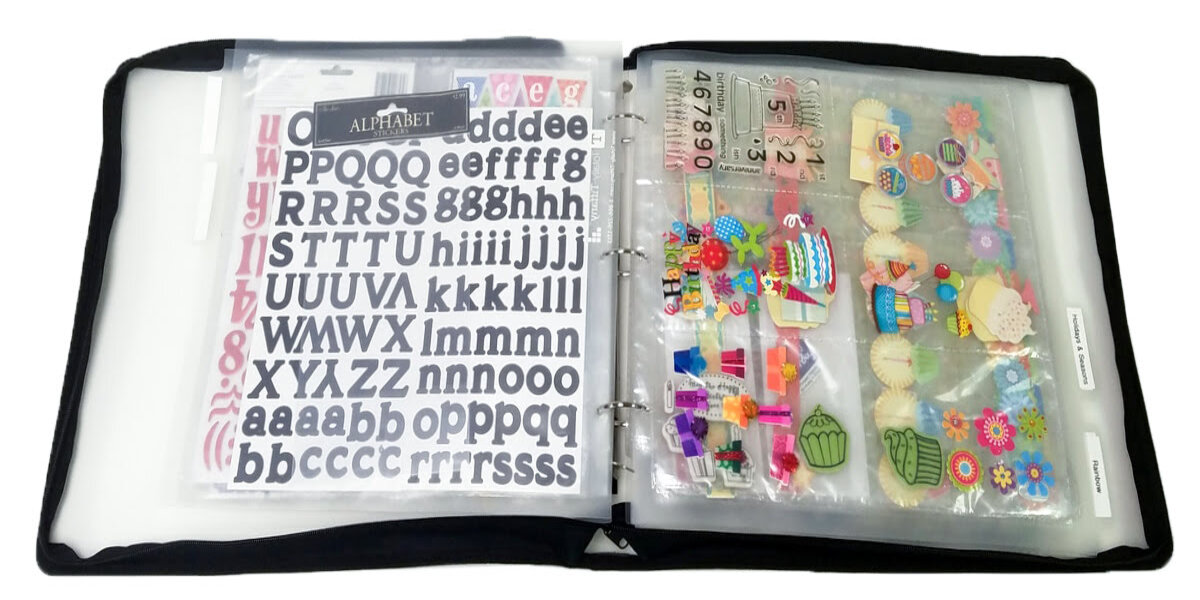

Articles
How To Store Stickers
Modified: January 19, 2024
Learn how to store stickers and keep them in perfect condition with these helpful articles.
(Many of the links in this article redirect to a specific reviewed product. Your purchase of these products through affiliate links helps to generate commission for Storables.com, at no extra cost. Learn more)
Introduction
Stickers have become a popular form of expression, used for personalizing belongings, promoting businesses, and adding a touch of creativity to everyday objects. From laptop decals to bumper stickers, stickers come in various shapes, sizes, and designs. However, to ensure their longevity and prevent them from losing their stickiness, it is essential to store stickers properly.
Proper storage not only helps protect stickers from damage but also allows for easy organization and retrieval when needed. Whether you are a sticker enthusiast, a small business owner with sticker inventory, or simply someone who wants to keep their stickers in pristine condition, understanding the importance of proper sticker storage is crucial. In this article, we will explore the various factors to consider when storing stickers and the different storage solutions available.
Key Takeaways:
- Proper sticker storage is crucial for preserving their quality, adhesive properties, and longevity. Choose the right storage solution based on your collection size and desired accessibility to keep your stickers vibrant and organized.
- Maintaining the quality and longevity of your stickers involves careful handling, protection from environmental factors, and regular inspection and cleaning of your storage solutions. Showcasing your sticker collection as a form of personal expression deserves proper care and attention.
Read more: How To Store Reusable Stickers
Importance of Proper Sticker Storage
Proper sticker storage plays a vital role in preserving the quality and longevity of your stickers. Without the right storage methods, stickers can become damaged, lose their adhesive properties, or experience color fading over time. Here are some key reasons why proper sticker storage is important:
- Prolongs sticker lifespan: Stickers are typically made from paper, vinyl, or a combination of materials. Exposure to moisture, extreme temperatures, and sunlight can cause stickers to deteriorate quickly. By storing them properly, you can extend their lifespan and ensure they remain vibrant and intact for years to come.
- Prevents damage: Stickers are vulnerable to scratches, tears, and creases, especially if they are stored loosely or placed in a stack without protection. Proper storage methods ensure that your stickers are shielded from physical damage, maintaining their pristine appearance.
- Retains adhesive properties: The adhesive backing of stickers can weaken over time, resulting in stickers becoming less sticky or even falling off completely. Correct storage techniques can help maintain the adhesive properties, allowing the stickers to adhere firmly to surfaces when applied.
- Simplifies organization: Whether you have a small collection of stickers or a larger inventory, organizing them properly makes it easier to locate specific designs or themes. With well-organized sticker storage, you can quickly find the stickers you want when you need them.
- Preserves sticker value: Stickers can hold sentimental value or even have monetary worth as collectibles. By storing them properly, you can preserve their value and ensure that they remain in pristine condition should you decide to sell or trade them in the future.
Now that we understand the importance of proper sticker storage, the next step is to explore the different storage solutions available to help protect and organize your sticker collection. From binders and folders to plastic sleeves and storage boxes, there are various options to choose from. Let’s dive into the world of sticker storage solutions in the next section.
Choosing the Right Storage Solution
When it comes to storing stickers, choosing the right storage solution depends on several factors, including the number of stickers you have, the type of stickers (paper or vinyl), and your personal preferences for organization and accessibility. Here are some factors to consider when selecting the right storage solution:
- Size and capacity: Consider the size and capacity of the storage solution in relation to your sticker collection. If you have a large number of stickers, you may need a storage option with ample space to accommodate them all. On the other hand, if you have a smaller collection, a more compact storage solution may suffice.
- Protection: Look for a storage solution that provides adequate protection against moisture, sunlight, and physical damage. Opt for options that have features such as acid-free materials and UV protection to keep your stickers safe and preserve their quality over time.
- Accessibility: Determine how easily you need to access your stickers. Some storage solutions offer quick and easy access to individual stickers, while others may require more effort to retrieve specific designs. Consider whether you want a solution that allows you to browse through your collection effortlessly or one that provides better protection but may have slightly more restrictions on accessibility.
- Organization: Think about how you want to organize your stickers. Some storage solutions come with built-in dividers or pockets, making it easier to categorize your stickers by theme, design, or other criteria. Others may require additional labeling or sorting systems to maintain organization within the storage solution.
- Portability: If you often take your sticker collection on the go or attend sticker-related events, consider a storage solution that is portable and easy to transport. Options like sticker albums or compact storage boxes can be convenient for those who want to showcase their stickers or participate in sticker swaps.
By considering these factors and evaluating your specific needs, you can choose a storage solution that suits your sticker collection and preferences. In the next section, we will explore some popular sticker storage options and discuss how they can be used effectively.
Clean and Dry Surfaces
Before storing your stickers, it is important to ensure that the surfaces where the stickers will be applied are clean and dry. This step is crucial for maintaining the adhesive properties of the stickers and ensuring their longevity. Here’s why clean and dry surfaces are important:
- Adhesive performance: Stickers adhere best to surfaces that are free from dust, dirt, and moisture. Any debris or residue on the surface can interfere with the adhesive properties of the sticker, leading to a weaker bond or even detachment. By cleaning the surface, you provide an optimal environment for the sticker to adhere properly.
- Prevents damage: If a sticker is attached to a dirty or damp surface, it can trap moisture or debris underneath, which may lead to damage over time. The moisture can cause the sticker to warp or discolor, and the debris can scratch or tear the sticker. Keeping the surfaces clean and dry helps protect the stickers from potential damage.
- Longevity: Storing stickers on clean and dry surfaces helps maintain their integrity and adhesive properties. If stickers are applied to a dirty or damp surface, they may not adhere properly and may start to peel off sooner. By ensuring the surfaces are clean and dry, you promote the longevity of the stickers.
- Ease of removal: If you ever need to remove a sticker from a surface, having a clean and dry surface makes the removal process much easier. Stickers applied to dirty or wet surfaces can leave behind residue or become difficult to remove without causing damage.
To ensure clean and dry surfaces, follow these steps before applying stickers:
- Clean the surface: Use a mild detergent or glass cleaner to clean the surface where the sticker will be applied. Remove any dust, dirt, or grime using a soft cloth or sponge. For certain surfaces, such as electronics or cars, use specialized cleaning products that are safe for those materials.
- Dry the surface: After cleaning, make sure to dry the surface thoroughly. Use a clean, lint-free cloth or allow the surface to air dry. Avoid applying stickers to surfaces that are still damp, as moisture can affect the adhesive performance.
- Avoid oily or textured surfaces: Some surfaces, such as oily or textured surfaces, may not provide an ideal environment for sticker adhesion. It is best to avoid applying stickers to these types of surfaces, as they may not adhere properly or may peel off easily.
By taking the time to clean and dry the surfaces before applying stickers, you can ensure a strong bond and prolong the life of your stickers. With clean and dry surfaces, you are ready to explore the various sticker storage options available. In the following sections, we will discuss different methods for storing stickers effectively.
Sticker Storage Options
When it comes to storing stickers, there are various options available depending on your preferences, collection size, and organizational needs. Here are some popular sticker storage solutions:
Read more: How To Store Sticker Collection
Method 1: Binder or Folder
A binder or folder is a versatile option for storing stickers. Choose a binder with clear plastic sleeves or pockets to easily view and organize your stickers. You can use dividers to categorize your stickers by theme, style, or any other criteria that suits your collection. Folders with pockets are another option, providing a lightweight and portable storage solution. Simply slip your stickers into the pockets and keep them organized within the folder. Binders and folders are ideal for those who want quick access to their stickers and prefer a compact storage solution.
Method 2: Plastic Sleeves or Poly Bags
Plastic sleeves or poly bags offer a simple and cost-effective way to store and protect your stickers. These transparent sleeves can be individually sealed or hole-punched for easy organization within a binder or file box. Plastic sleeves are especially useful for preserving sticker sheets or sets that you want to keep together. You can also use poly bags to group stickers by specific themes or designs.
Method 3: Sticker Albums or Collecting Books
Sticker albums or collecting books are specifically designed for storing and showcasing stickers. These albums feature pages with peel-and-stick backing, allowing you to easily attach your stickers without the need for additional adhesives. Sticker albums come in various sizes, accommodating different sticker formats. They are a great option for those looking to display their sticker collection or participate in sticker trading events.
Method 4: Plastic Storage Boxes or Containers
Plastic storage boxes or containers provide a more spacious storage solution for larger sticker collections. Look for boxes with dividers or adjustable compartments to keep your stickers organized by category or size. These boxes are durable and provide protection against moisture and physical damage. They are suitable for storing sticker sheets, loose stickers, or sticker rolls.
Read more: How To Store Stickers For Scrapbooking
Method 5: Framing and Displaying Stickers
If you have special or prized stickers that you want to showcase, consider framing them or using display cases. Frame individual stickers or create a collage of stickers in a shadow box frame. This method allows you to exhibit your favorite stickers as wall art or decor. Display cases are another option for showcasing your sticker collection while keeping them protected from dust and damage.
The storage method you choose depends on your personal preferences, the size of your sticker collection, and the level of organization you require. Feel free to mix and match different storage solutions based on the variety and quantity of stickers you have. In the next section, we will discuss some tips for organizing stickers within your chosen storage solution.
Method 1: Binder or Folder
A binder or folder is a versatile and popular option for storing stickers. They provide a convenient and organized solution for keeping your stickers safe and easily accessible. Here’s how you can effectively use a binder or folder for sticker storage:
- Choose the right size: Start by selecting a binder or folder that is suitable for your sticker collection. Consider the number and size of your stickers to determine the size of the storage solution. Opt for a binder or folder with a capacity that fits your needs without cramming the stickers too tightly.
- Select clear plastic sleeves or pockets: Look for clear plastic sleeves or pockets to protect your stickers while still allowing you to view and appreciate their designs. Clear sleeves also make it easier to organize and find specific stickers within the binder or folder. Ensure that the plastic material is acid-free to prevent any potential damage to your stickers over time.
- Categorize your stickers: Use dividers to categorize and organize your stickers within the binder. You can create sections based on themes, styles, or any other criteria that make sense for your collection. Create labels for each section to make it easier to locate specific stickers when needed.
- Arrange stickers within the sleeves: Slip your stickers into the individual sleeves or pockets within the binder or folder. You can organize them in alphabetical order, by size, or based on your chosen categorization system. Ensure that the stickers are placed securely within the sleeves to prevent them from slipping out or becoming damaged.
- Maintain cleanliness: Keep your binder or folder clean to ensure the longevity of your stickers. Regularly wipe down the exterior surfaces to remove dust and dirt. If any stickers become dirty or damaged, remove them from the storage solution and clean or replace them as necessary.
- Consider additional protection: If you have particularly valuable or fragile stickers, you may want to consider adding additional protection. For example, you can use acid-free tissue paper or glassine interleaving sheets between stickers to prevent any potential transfer of adhesives or ink. This additional layer of protection can help preserve the quality of your stickers.
- Regularly update and maintain: As your sticker collection grows or changes, be sure to update your binder or folder accordingly. Remove stickers that you no longer wish to keep or replace outdated ones. This regular maintenance will help keep your sticker storage solution organized and up to date.
A binder or folder is an excellent storage option for those who want quick and easy access to their sticker collection. Its portability also makes it convenient for traveling or attending sticker-related events. By following these tips, you can effectively utilize a binder or folder to store and protect your stickers. In the next section, we will explore another sticker storage method using plastic sleeves or poly bags.
Method 2: Plastic Sleeves or Poly Bags
Plastic sleeves or poly bags are simple yet practical options for storing and protecting stickers. They offer flexibility and versatility, allowing you to store stickers of varying sizes and formats. Here’s how you can effectively use plastic sleeves or poly bags for sticker storage:
- Select the right size: Begin by choosing plastic sleeves or poly bags that are appropriate for the size of your stickers. It’s important to have sleeves or bags that fit your stickers comfortably without being too tight or loose. Consider the dimensions of your stickers and ensure that the sleeves or bags are slightly larger than the stickers to provide adequate protection.
- Choose transparent and acid-free material: Opt for plastic sleeves or poly bags that are transparent and made from acid-free materials. Transparent sleeves allow you to easily view and appreciate the stickers without removing them from the storage solution. Acid-free material helps prevent any potential damage or degradation to the stickers over time.
- Group stickers by theme or design: Use the plastic sleeves or poly bags to group your stickers based on themes, designs, or any other criteria that make sense for your collection. This organization method will make it easier to find and retrieve specific stickers when needed.
- Label the sleeves or bags: Consider labeling the sleeves or bags to provide additional organization and clarity. You can use adhesive labels or write directly on the sleeves with relevant information such as sticker themes, dates, or any other details that are helpful for your collection management.
- Store in a binder, file box, or storage container: Place the labeled plastic sleeves or poly bags in a binder with clear pockets, a file box, or a storage container. Binders with pockets or file boxes with folders can offer added organization and protection. Make sure the storage solution you choose fits the size and quantity of your sleeves or bags.
- Maintain cleanliness and order: Regularly clean the plastic sleeves or poly bags, as well as the storage container, to keep your stickers in pristine condition. Dust and dirt can accumulate over time, so wiping them down periodically will help maintain the cleanliness of your storage solution.
- Consider additional protection: If you have particularly delicate or valuable stickers, you may want to consider placing them in individual poly bags before putting them in the plastic sleeves. This extra layer of protection can help prevent any potential damage to your stickers.
- Expand as your collection grows: As your sticker collection continues to expand, you can easily add more plastic sleeves or poly bags to accommodate new additions. This flexibility allows your storage solution to grow and evolve with your collection.
Using plastic sleeves or poly bags for sticker storage offers a convenient and flexible solution, especially for those with a diverse sticker collection. By following these tips, you can effectively organize and protect your stickers while keeping them easily accessible. Next, we will explore another sticker storage method using sticker albums or collecting books.
Method 3: Sticker Albums or Collecting Books
Sticker albums or collecting books provide a specialized and visually appealing storage solution for stickers. These albums are designed with pages that have peel-and-stick backing, allowing you to easily attach and display your stickers. Here’s how you can effectively use sticker albums or collecting books for sticker storage:
- Choose the right album: Start by selecting a sticker album or collecting book that suits your preferences and the size of your sticker collection. Consider the number of pages, the size of the individual pockets, and whether you want a themed or customizable album.
- Plan the layout: Before attaching your stickers, plan the layout of each page. Decide how you want to organize your stickers, whether it’s by theme, design, or any other criteria that make sense for your collection. This planning will help ensure a visually appealing and organized display.
- Attach stickers carefully: Peel the backing off each sticker and carefully attach it to the designated pocket on the album page. Take your time to position the sticker correctly to avoid air bubbles or misalignment. Press down firmly on the sticker to ensure it adheres securely to the page.
- Consider adding descriptions or captions: If desired, you can add descriptions or captions to accompany your stickers. Write details such as sticker origins, dates, or any interesting facts about the design. This additional information adds context and enhances the storytelling aspect of your collection.
- Label or index your pages: Label or index your album pages to provide easy navigation and reference. You can use tabs, labels, or a separate index page to list the contents of each page. This will help you quickly locate specific stickers within your album.
- Protect your album: Store your sticker album or collecting book in a cool, dry place, away from direct sunlight and extreme temperatures. Protecting your album from environmental factors will help preserve the quality and longevity of your stickers.
- Expand your collection: As your sticker collection grows, consider adding more pages or acquiring additional sticker albums or collecting books. This will allow you to continue showcasing and organizing your expanding collection in an orderly and aesthetically pleasing manner.
- Share and enjoy: Share your sticker album or collecting book with others to enjoy and appreciate your sticker collection. Display it on shelves, coffee tables, or other areas where it can be easily admired by friends and family.
Using sticker albums or collecting books not only provides a secure and organized storage solution for your stickers but also allows you to create a visually appealing display of your collection. By following these tips, you can effectively utilize sticker albums or collecting books to showcase and protect your stickers. In the next section, we will explore another sticker storage method using plastic storage boxes or containers.
Read more: How To Organize Stickers
Method 4: Plastic Storage Boxes or Containers
If you have a larger sticker collection or prefer a more spacious storage solution, plastic storage boxes or containers are an excellent choice. These containers offer durability and protection while allowing for easy organization and access. Here’s how you can effectively use plastic storage boxes or containers for sticker storage:
- Choose the right size and type: Select a plastic storage box or container that suits the size of your sticker collection. Consider the dimensions and depth of the container to ensure it can accommodate your stickers without them being crumpled or damaged. Opt for clear plastic to easily see the contents of the box.
- Use dividers or compartments: If the storage box or container does not have built-in dividers or compartments, consider using plastic dividers or small containers within the larger container. Dividers or compartments will help keep your stickers organized and prevent them from mixing together or becoming damaged during storage.
- Categorize and label: Organize your stickers within the plastic storage box or container by categorizing them based on themes, styles, or any other criteria that suits your collection. Label the divisions or individual containers to easily identify and locate specific stickers when needed.
- Place sticker sheets in protective covers: If you have sticker sheets, consider placing them in protective covers or plastic sleeves before placing them in the storage box. This extra layer of protection will help prevent the sheets from getting damaged or torn while stored with other stickers.
- Stack or store vertically: Depending on the size and quantity of your stickers, you can choose to either stack the plastic storage boxes or containers or store them vertically. If stacking, be sure to place the heavier boxes at the bottom to prevent toppling. If storing vertically, use sturdy bookends or dividers to keep the containers upright.
- Keep the environment clean and dry: Store the plastic storage boxes or containers in a clean and dry environment to maintain the quality of your stickers. Avoid areas with excessive humidity or extreme temperatures, as they can potentially damage the stickers.
- Update and maintain: Regularly update and maintain your sticker collection within the plastic storage boxes or containers. Remove any stickers that are no longer desired or replace damaged stickers as necessary. This will keep your sticker storage organized and up to date.
- Consider additional protection: If you have particularly valuable or delicate stickers, you may want to place them in protective sleeves or envelopes before storing them in the plastic containers. This extra layer of protection will help safeguard them from potential damage.
Using plastic storage boxes or containers for sticker storage offers a spacious and customizable solution for your collection. By following these tips, you can effectively organize, protect, and easily access your stickers. In the next section, we will explore another method of storing and displaying stickers – framing and displaying them.
Store stickers in a cool, dry place away from direct sunlight to prevent fading and warping. Consider using a plastic sleeve or a sticker album to keep them organized and protected.
Method 5: Framing and Displaying Stickers
If you have special or prized stickers that you want to showcase, framing them or using display cases is an excellent option. This method allows you to turn your stickers into unique pieces of wall art or decor. Here’s how you can effectively frame and display your stickers:
- Choose the right frame: Select a frame that suits the size and style of your stickers. Consider the dimensions and material of the frame, ensuring it provides enough depth to accommodate the stickers without crushing or damaging them. Opt for a frame with a glass or plexiglass front to protect the stickers from dust and damage.
- Arrange and position the stickers: Plan the layout of your stickers within the frame. Depending on the size and number of stickers, you can create a collage or arrange them in a specific design. Experiment with different positions and orientations to find the most visually pleasing arrangement.
- Attach the stickers: Carefully attach the stickers to the backing board of the frame. Use adhesive putty or removable tape to secure the stickers in place. Ensure that the stickers adhere firmly to the backing board, but also consider using acid-free, archival adhesive to prevent any potential damage over time.
- Add a matboard: Consider adding a matboard between the stickers and the frame to provide a clean and elegant border. The matboard can complement the colors or designs of your stickers, enhancing their visual impact. Make sure the matboard is acid-free to prevent any adverse effects on the stickers.
- Close and hang the frame: Once the stickers are securely attached and a matboard is added, close the frame and ensure it is tightly sealed. Use appropriate hanging hardware to safely and securely display the frame on a wall. Consider the weight and size of the frame to choose the right hanging method.
- Consider display cases: For three-dimensional or oversized stickers, consider using display cases instead of frames. Display cases provide a protective and visually appealing way to showcase your stickers while keeping them safe from dust and damage. Choose a display case that fits the size and shape of your stickers, ensuring there is enough space for them to be comfortably displayed.
- Rotate and update: Periodically rotate and update the stickers in your frames or display cases to keep your display fresh and interesting. Consider seasonal or thematic changes to add variety and keep your sticker collection visually engaging.
- Share and enjoy: Share your framed or displayed stickers with others to enjoy and appreciate your collection. Consider placing them in high-traffic areas, such as living rooms or home offices, where they can be admired by friends, family, or visitors.
Framing and displaying your stickers not only allows you to showcase your collection but also turns them into unique pieces of art. By following these tips, you can effectively frame and display your stickers while keeping them protected and visually appealing. In the next section, we will discuss some tips for organizing your stickers within your chosen storage solution.
Tips for Organizing Stickers within Storage Solutions
Organizing your stickers within your chosen storage solution is essential for easy retrieval, maintaining order, and maximizing the space available. By following these tips, you can effectively organize and manage your sticker collection:
- Categorize by theme, style, or design: Group your stickers together based on common themes, styles, or designs. This categorization makes it easier to locate specific stickers and provides a sense of organization within your storage solution.
- Use dividers or labels: If your storage solution allows for it, use dividers or labels to separate different categories of stickers. Dividers can be made from cardboard or purchased specifically for your storage solution, while labels can be used to identify the contents of each section.
- Arrange stickers in a logical order: Consider arranging your stickers in a logical order, such as alphabetical, chronological, or by size. This helps maintain consistency and makes it easier to find specific stickers when needed.
- Create a catalog or inventory: Keep a catalog or inventory of your stickers to track what you have in your collection. This can be a simple spreadsheet or a dedicated app that allows you to document details such as sticker names, themes, purchase dates, or any other relevant information.
- Consider storing sticker sheets together: If you have sticker sheets, store them together in a separate section or sleeve within your storage solution. Keeping them as a set prevents them from getting mixed up or separated, making it easier to locate specific designs.
- Rotate stickers periodically: To keep your sticker collection fresh and visually interesting, consider rotating certain stickers or themes on a regular basis. This allows you to showcase different stickers and prevents others from being forgotten or overlooked.
- Organize by size: If you have stickers of varying sizes, consider organizing them by size within your storage solution. This can be done by dedicating specific sections, sleeves, or compartments to different size categories, ensuring that each sticker has a suitable spot.
- Maintain consistency: Once you decide on an organizational system, strive to maintain consistency. This will streamline the process of adding new stickers and searching for specific ones, as you will become familiar with your own organizational structure.
- Regularly declutter and update: Periodically review your sticker collection and remove any stickers that no longer serve a purpose or that you no longer desire. This helps free up space within your storage solution and keeps it from becoming overcrowded or disorganized.
By implementing these tips, you can ensure that your sticker collection is organized, easy to navigate, and well-maintained within your chosen storage solution. In the next section, we will discuss how to maintain the quality and longevity of your stickers over time.
Maintaining Sticker Quality and Longevity
To keep your sticker collection in top-notch condition for years to come, it’s important to take proper care and implement good maintenance practices. Here are some tips to help you maintain the quality and longevity of your stickers:
- Handle stickers with clean hands: Before handling stickers, make sure your hands are clean and free from oils, lotions, or any substances that could transfer onto the stickers. This prevents any unwanted residue or damage.
- Avoid exposure to sunlight: Prolonged exposure to direct sunlight can cause stickers to fade or discolor over time. Store your stickers or display them in areas that are shielded from direct sunlight to preserve their vibrancy.
- Protect stickers from extreme temperatures and humidity: Stickers are susceptible to damage from extreme temperatures and high humidity. Avoid storing or displaying stickers in areas with fluctuating temperatures, such as attics or basements, as well as places with high humidity, like bathrooms or kitchens.
- Handle stickers carefully during application: When applying stickers, take care to avoid stretching or tearing them. Apply them slowly and gently, smoothing out any air bubbles or wrinkles with a soft cloth or your fingertips.
- Store stickers in a clean and dry environment: Choose a storage solution that keeps your stickers in a clean and dry environment. Avoid areas prone to moisture, excessive dust, or dirt accumulation, as these can potential damage the stickers.
- Keep stickers away from water and liquid: Stickers are not typically waterproof, so keep them away from water or other liquids. Exposing stickers to liquid can cause them to warp, peel, or lose their adhesive properties.
- Avoid placing heavy objects on top of sticker storage: If you stack your storage containers or albums, avoid placing heavy objects on top of them. The weight can damage stickers or cause them to become misshapen over time.
- Regularly clean your storage solution: Dust and debris can accumulate on your storage solution over time, so it’s important to clean it regularly. Wipe down any surfaces or sleeves with a soft, lint-free cloth to keep them clean and free from potential contaminants.
- Inspect stickers periodically: Take the time to inspect your stickers periodically for any signs of damage or deterioration. If you notice any peeling, fading, or other issues, consider replacing or repairing the affected stickers to maintain the overall quality of your collection.
- Handle second-hand stickers with caution: If you acquire second-hand or vintage stickers, be cautious when handling them. They may have already experienced some wear and tear, so handle them gently and follow the aforementioned preservation tips to ensure their longevity.
By following these maintenance tips, your sticker collection will remain in excellent condition, preserving their quality and ensuring their longevity. Now, let’s wrap up this article.
Read more: What Are Stickers In The Grass
Conclusion
Proper sticker storage is essential for preserving the quality, adhesive properties, and longevity of your stickers. Whether you have a small collection or a vast assortment, taking care of your stickers ensures that they remain vibrant, organized, and ready to use whenever you need them.
In this article, we explored various methods for storing stickers, including binders or folders, plastic sleeves or poly bags, sticker albums or collecting books, plastic storage boxes or containers, and framing and displaying stickers. Each method offers its own advantages and can be chosen based on your preferences, collection size, and desired level of accessibility.
We also discussed the importance of clean and dry surfaces when applying and storing stickers. By preparing surfaces properly, you can maintain the adhesive properties of your stickers and ensure their long-lasting stickiness.
In addition, we provided tips for organizing your stickers within your chosen storage solution. Categorizing by theme, style, or design, using dividers or labels, and maintaining consistency will help you easily locate specific stickers and keep your collection well-organized.
Maintaining the quality and longevity of your stickers is crucial for their preservation. By handling them carefully, protecting them from sunlight, extreme temperatures, and moisture, and regularly inspecting and cleaning your storage solutions, you can ensure that your stickers remain in excellent condition for years to come.
Remember, sticker storage is not only about practicality but also about showcasing your collection as a form of personal expression. Whether you choose to display them proudly on your walls, store them neatly in albums, or keep them safely tucked away, the passion and creativity you put into your sticker collection deserve proper care and attention.
So, invest in the right storage solution, handle your stickers with care, and enjoy the joy and beauty they bring to your life. Happy sticker storing!
Frequently Asked Questions about How To Store Stickers
Was this page helpful?
At Storables.com, we guarantee accurate and reliable information. Our content, validated by Expert Board Contributors, is crafted following stringent Editorial Policies. We're committed to providing you with well-researched, expert-backed insights for all your informational needs.
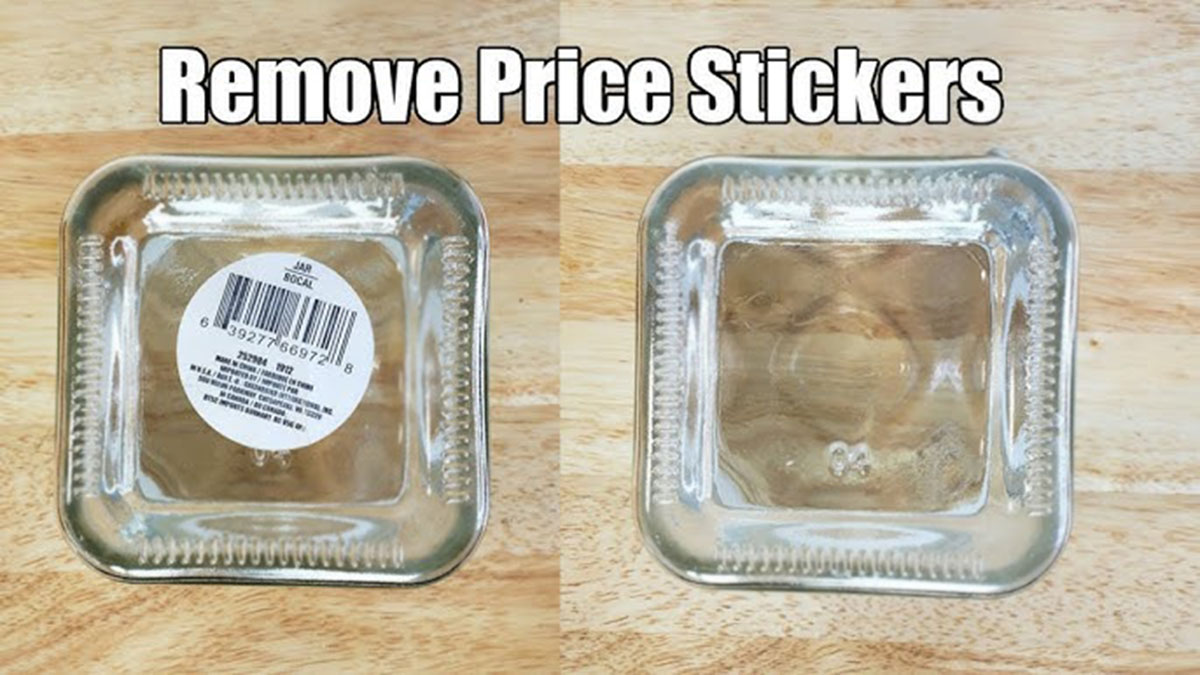
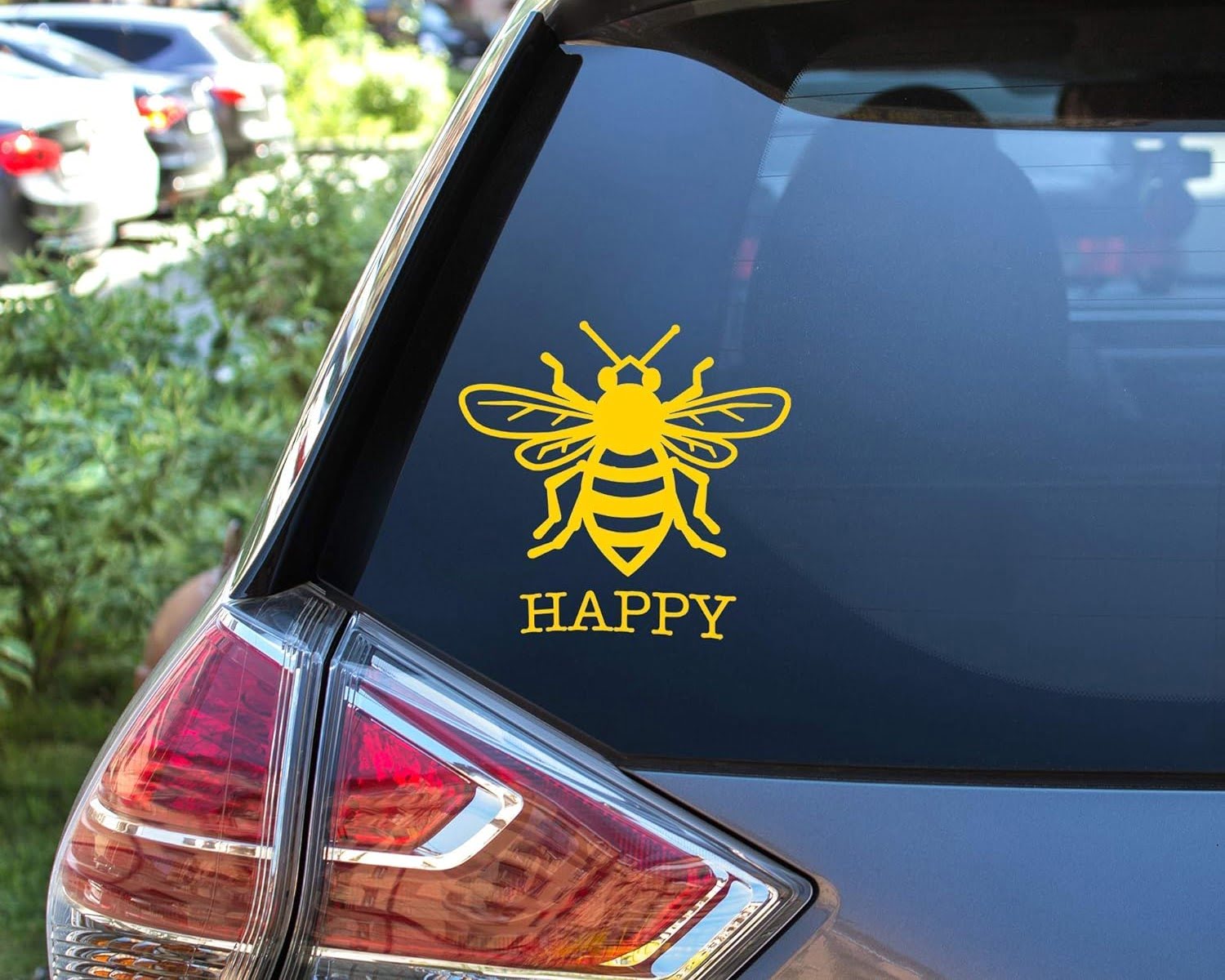
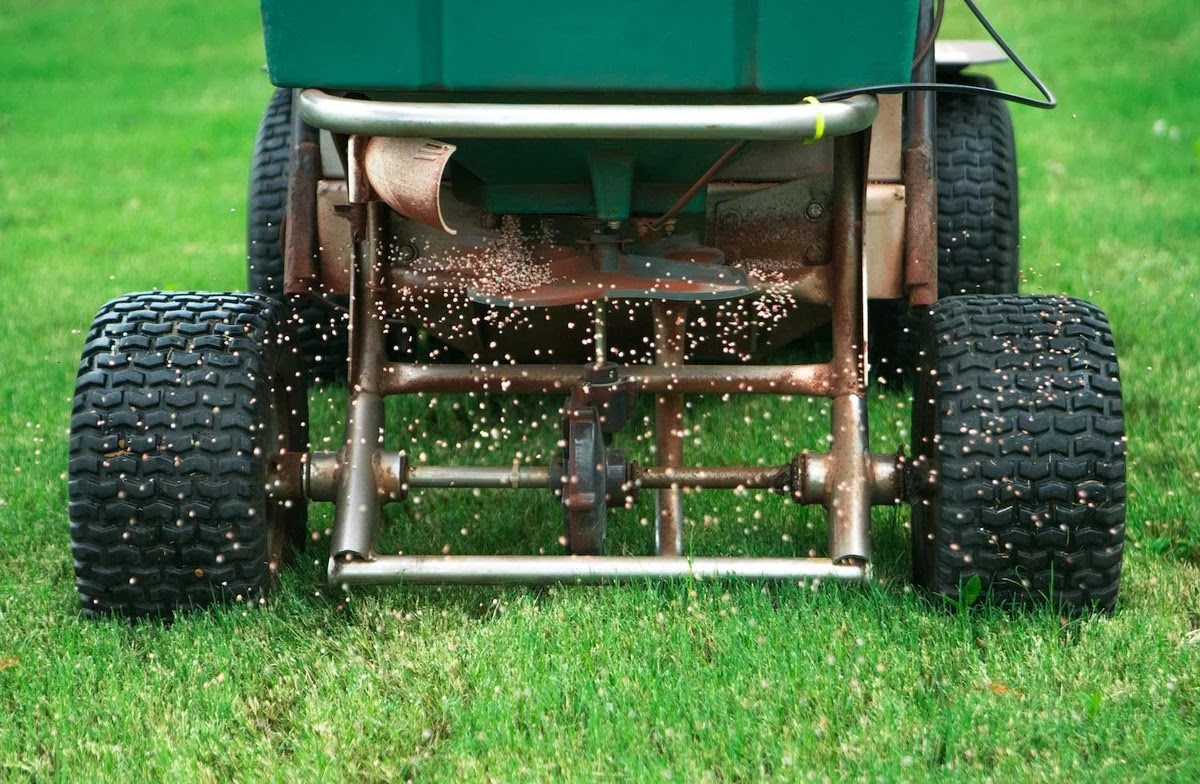
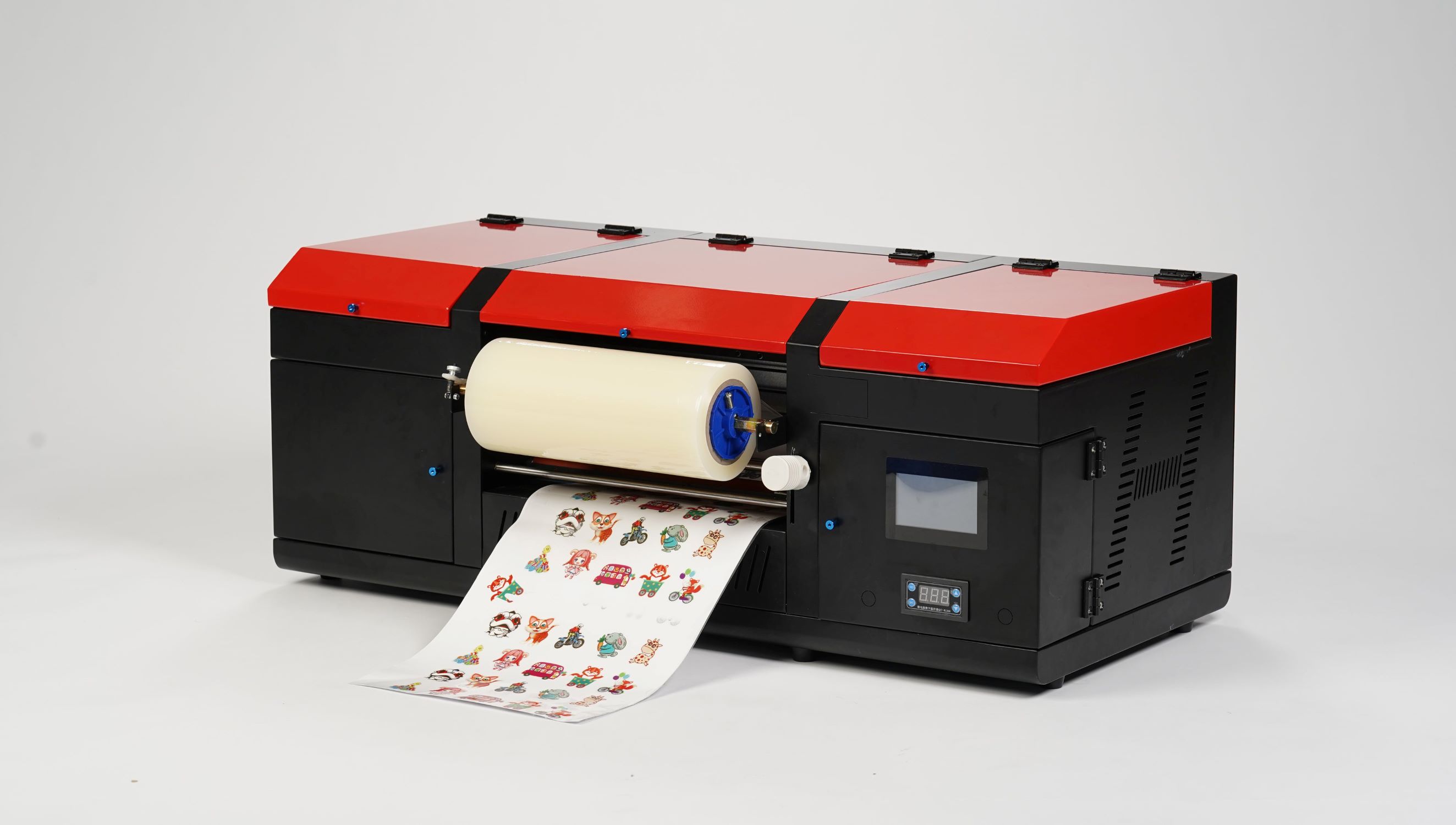
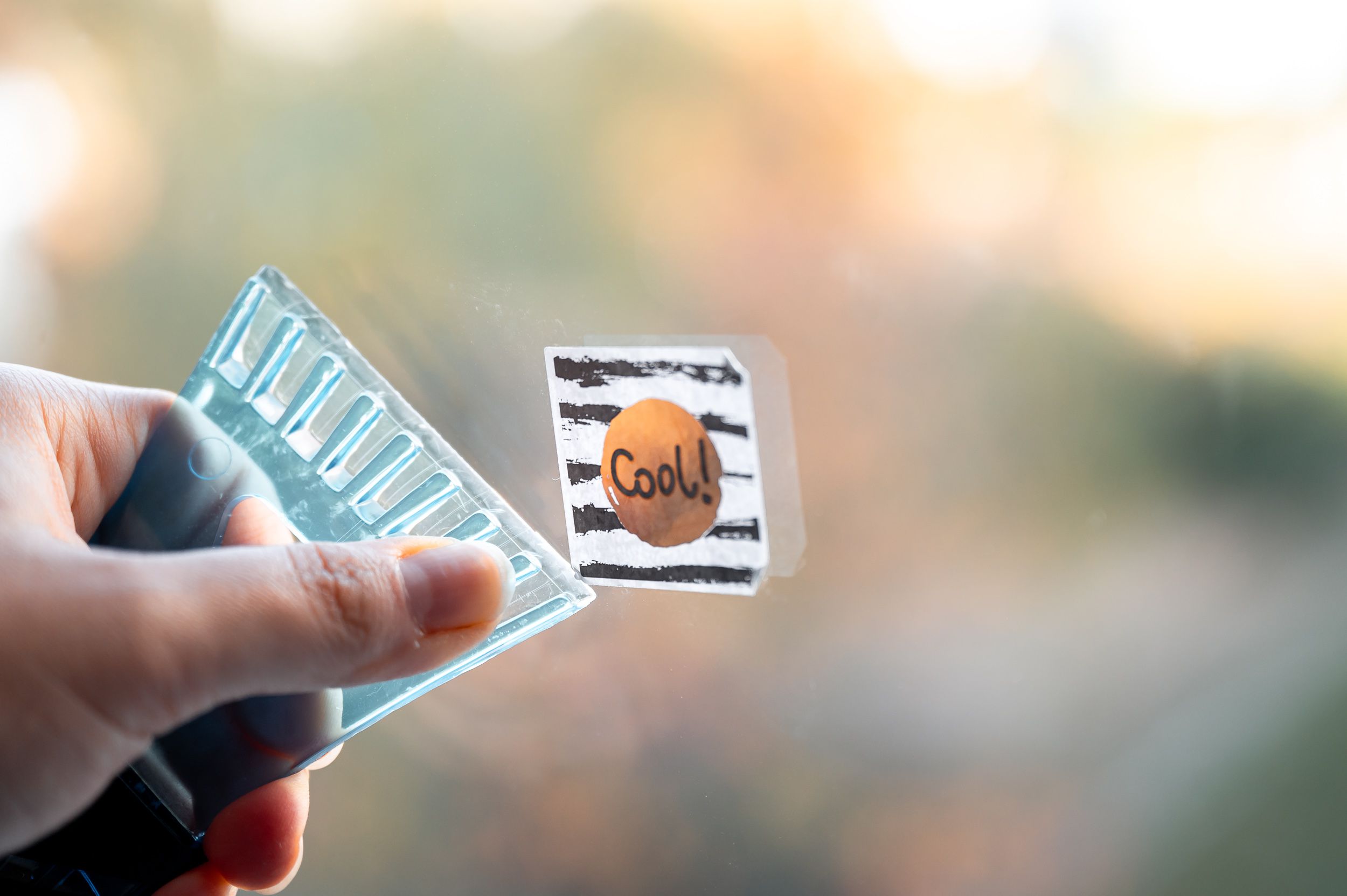

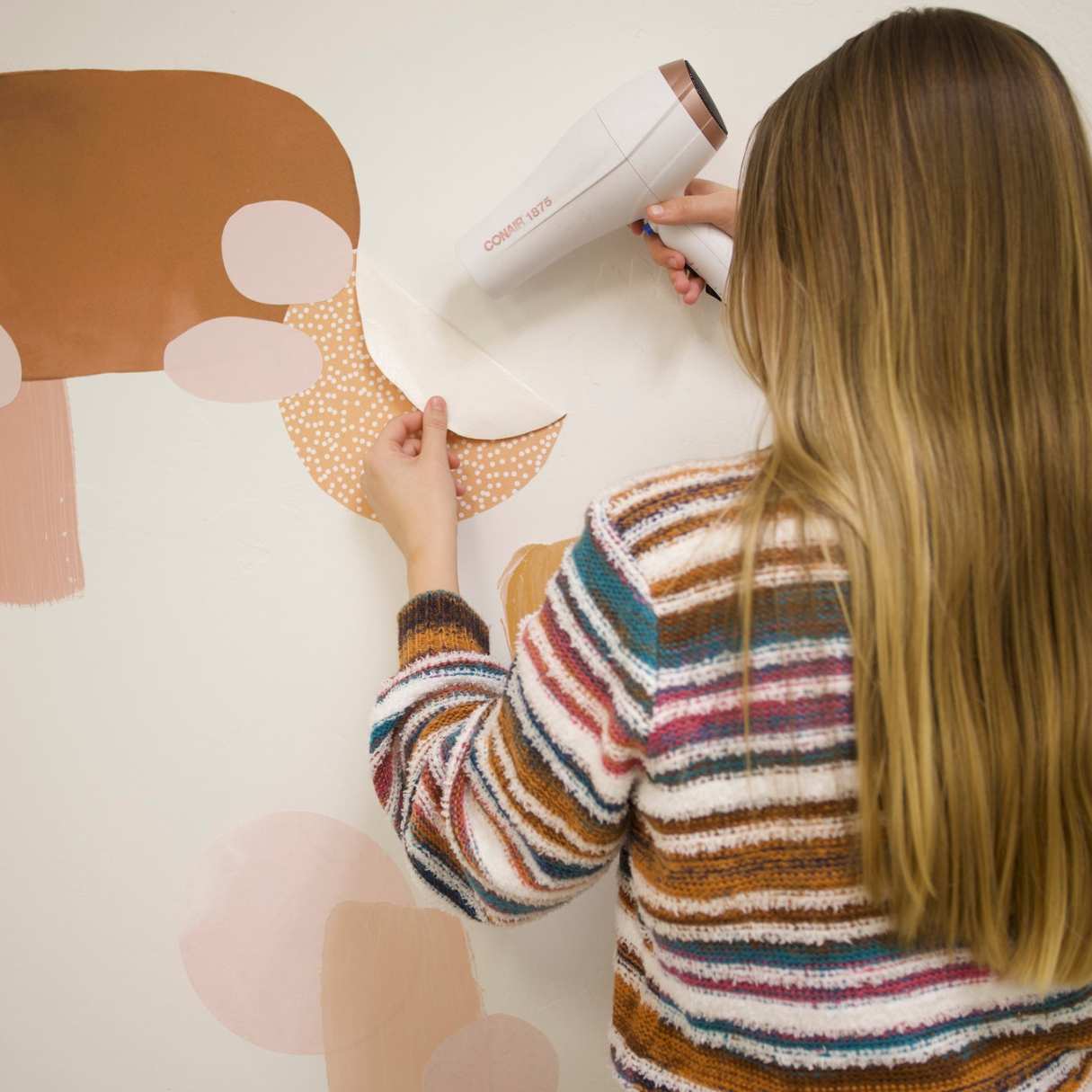
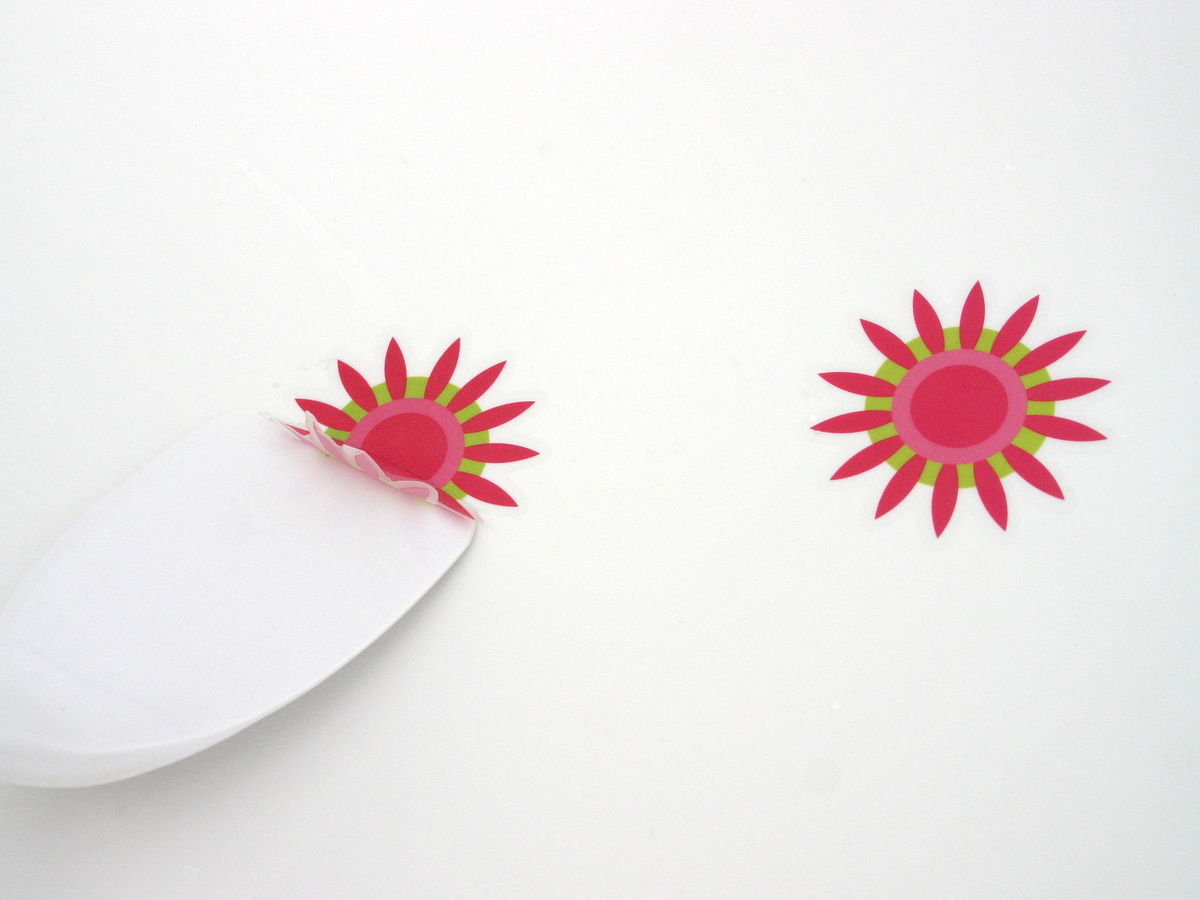
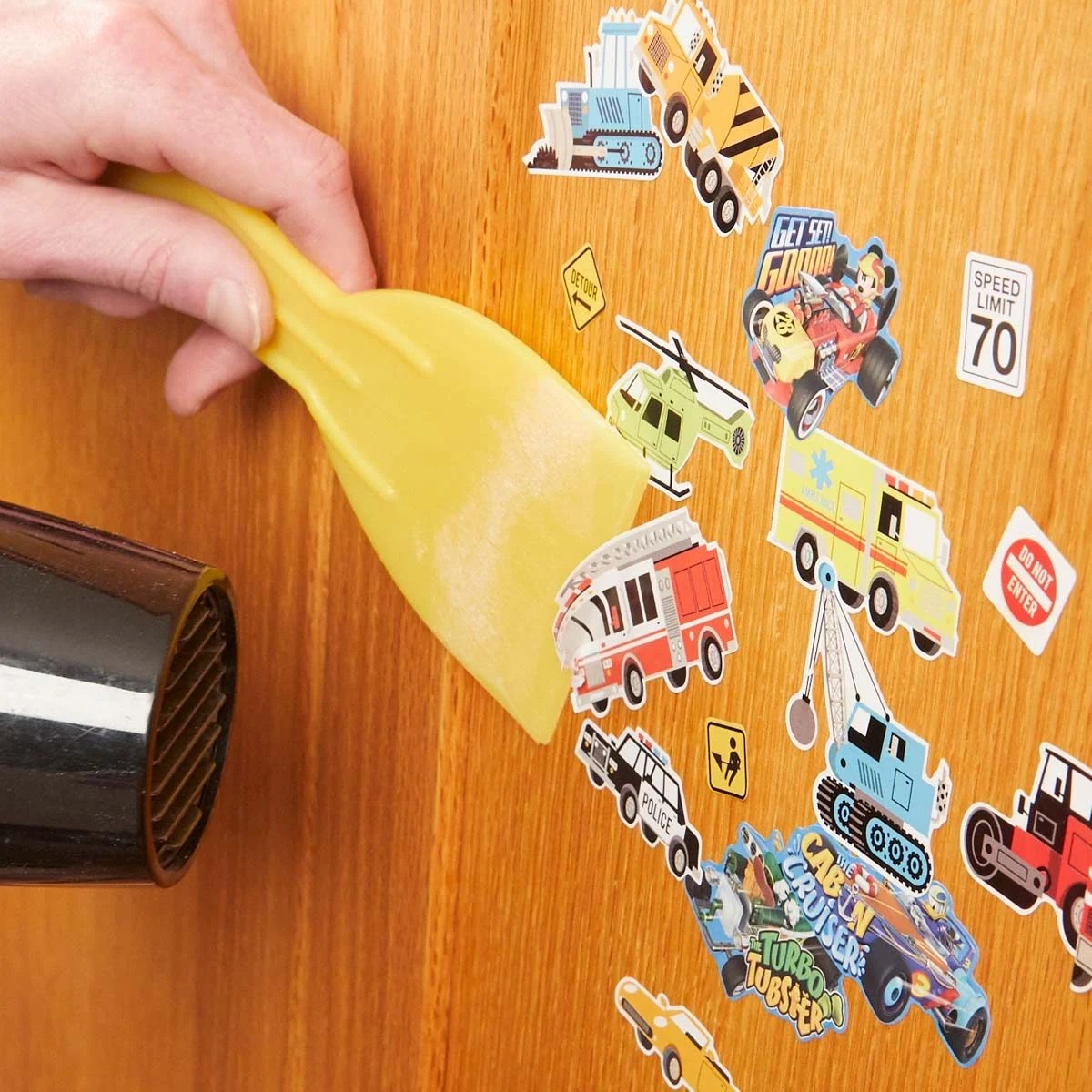
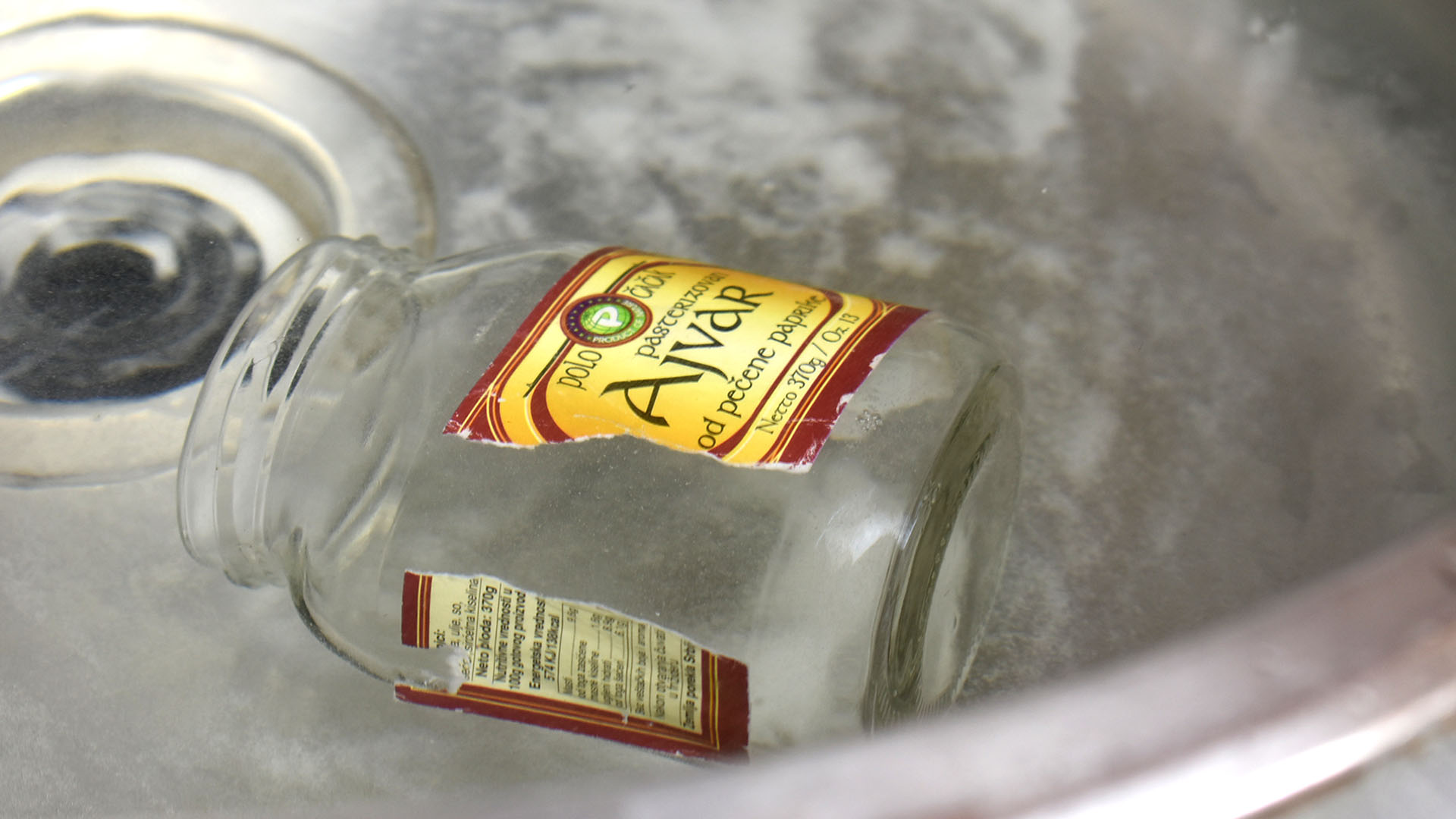
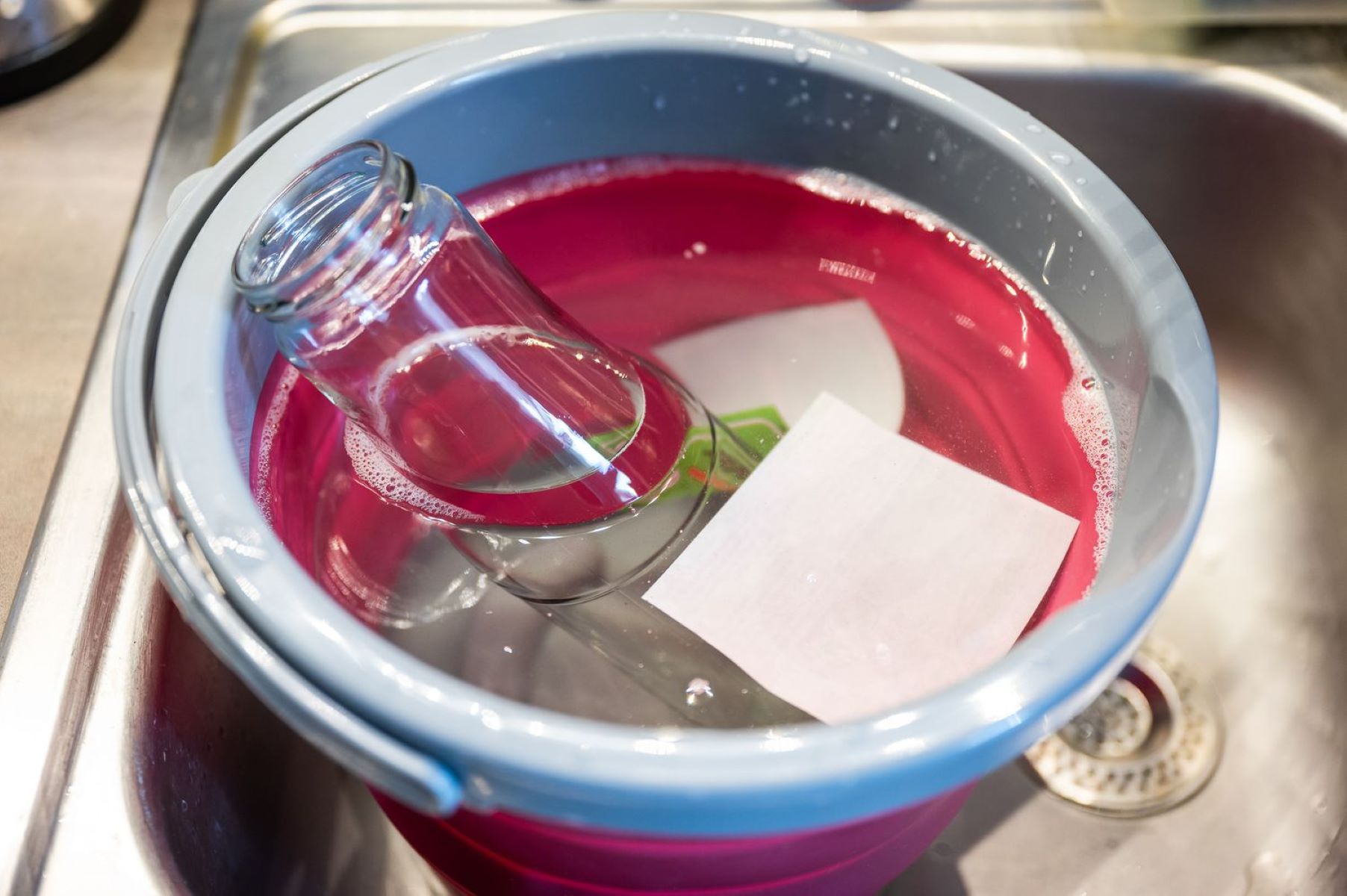

0 thoughts on “How To Store Stickers”